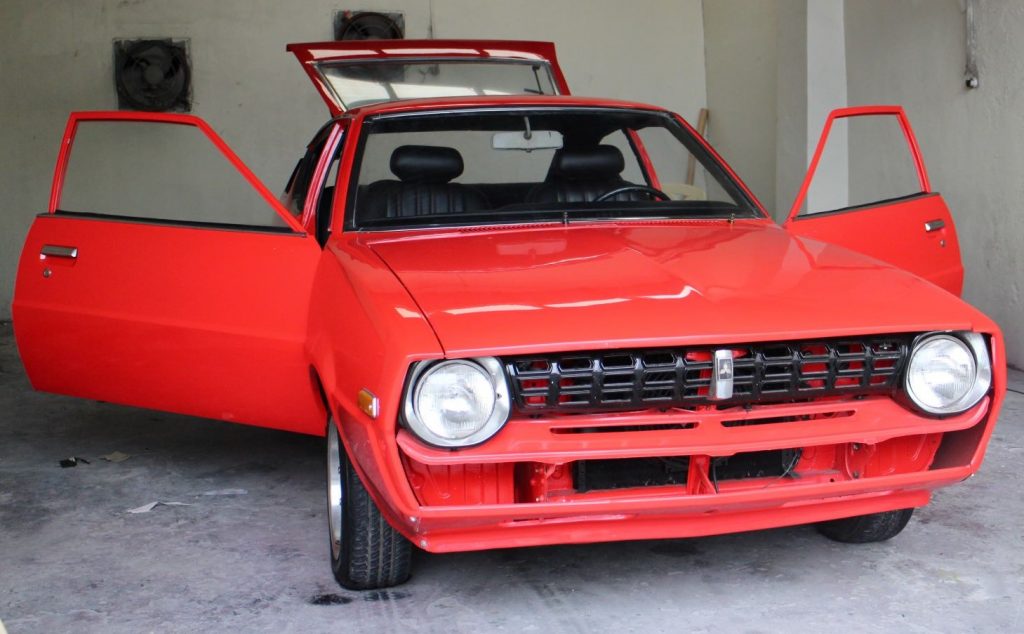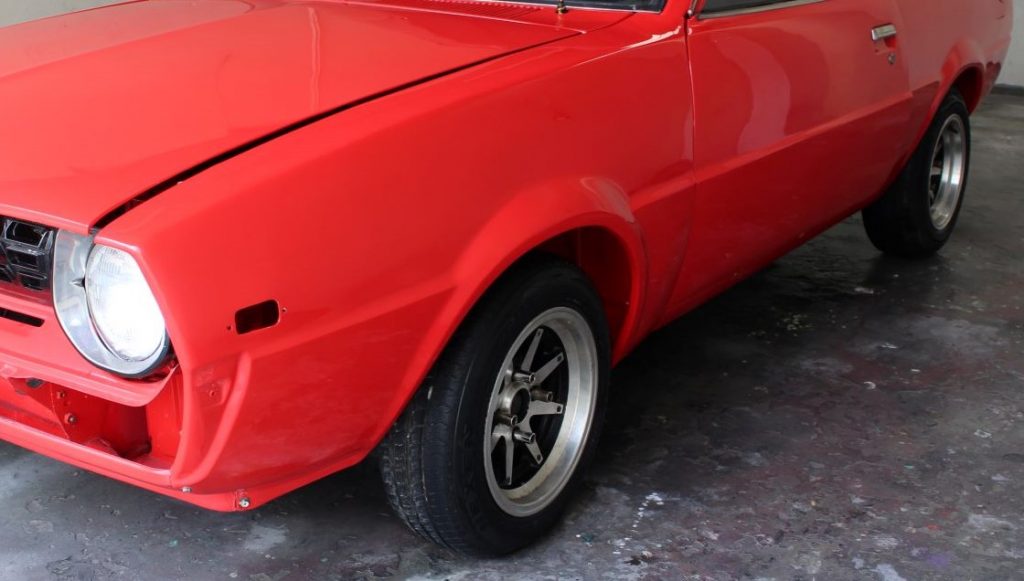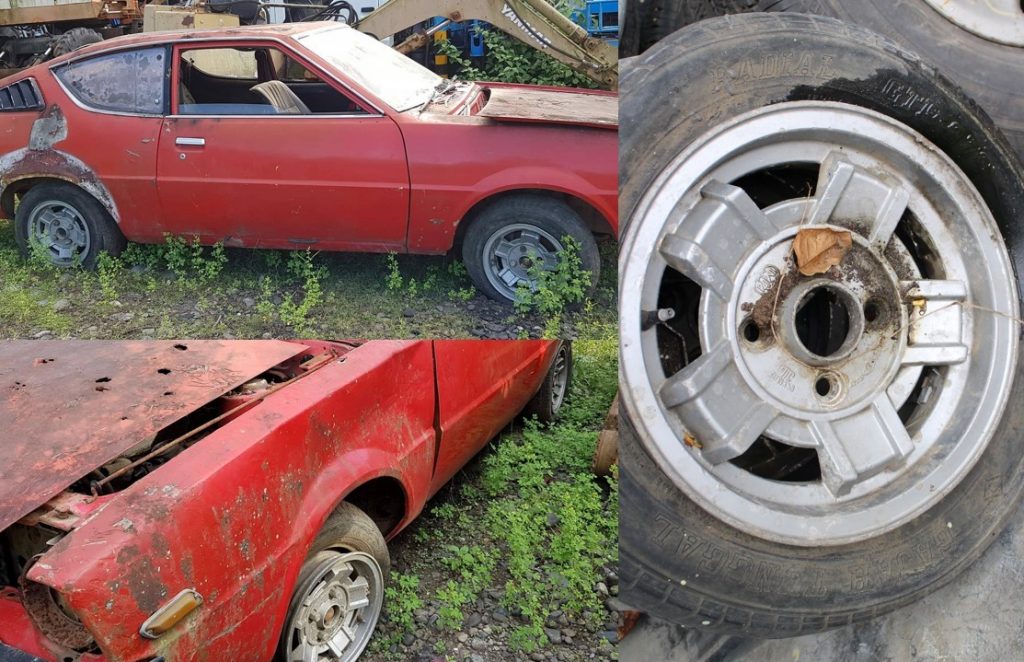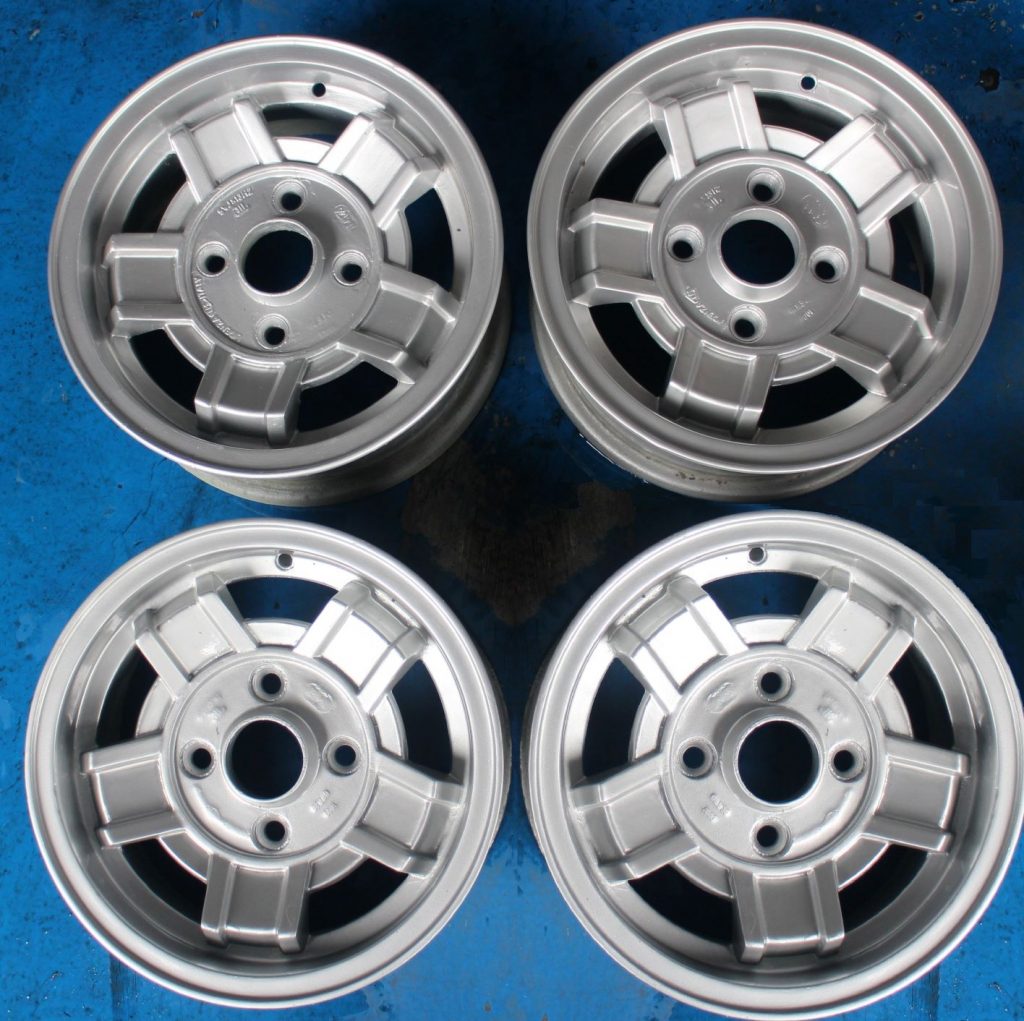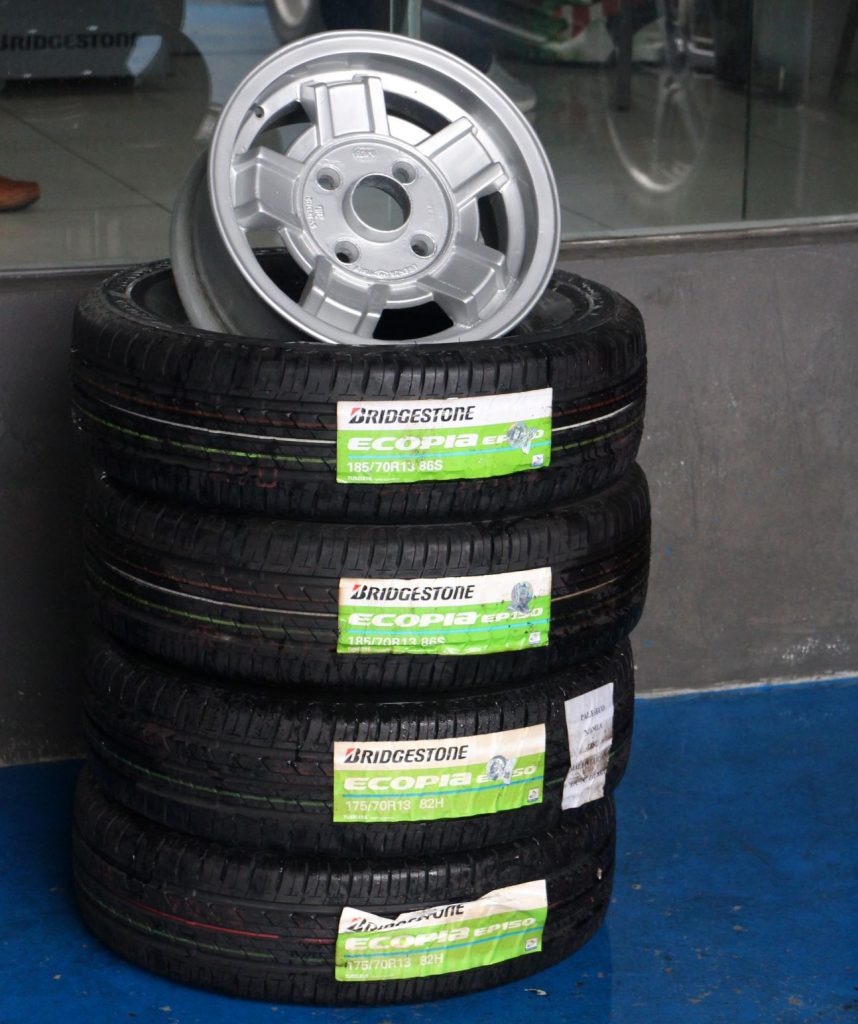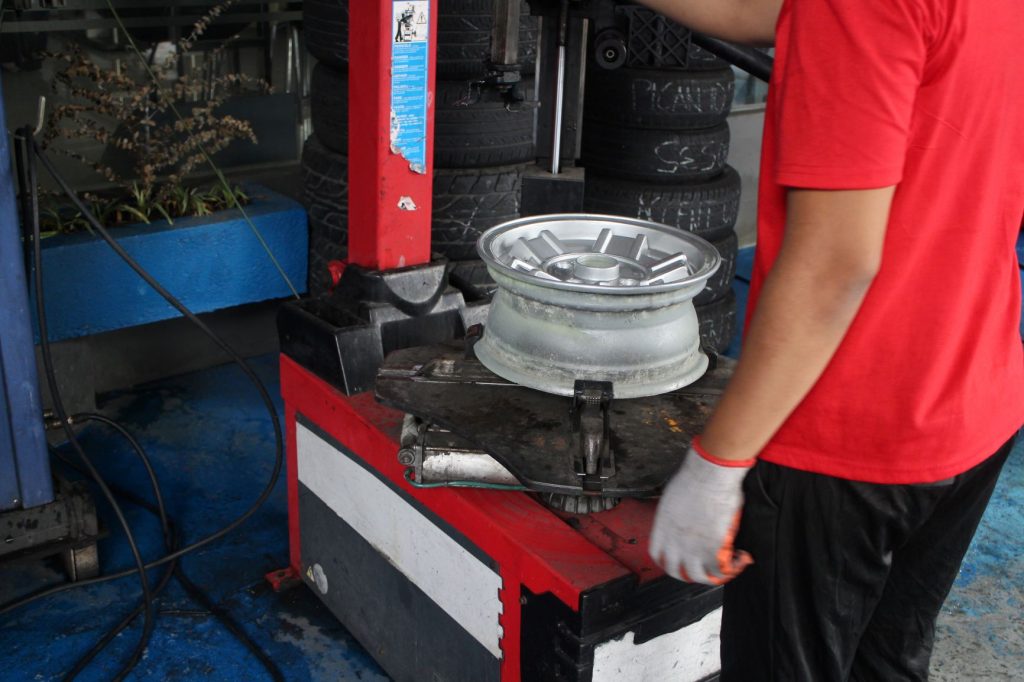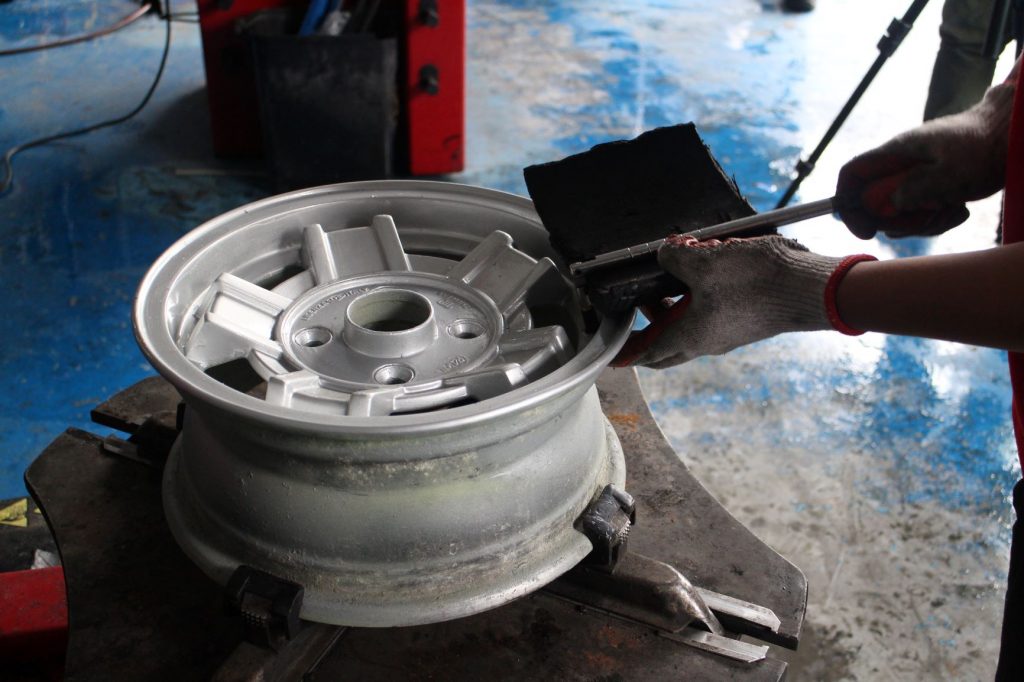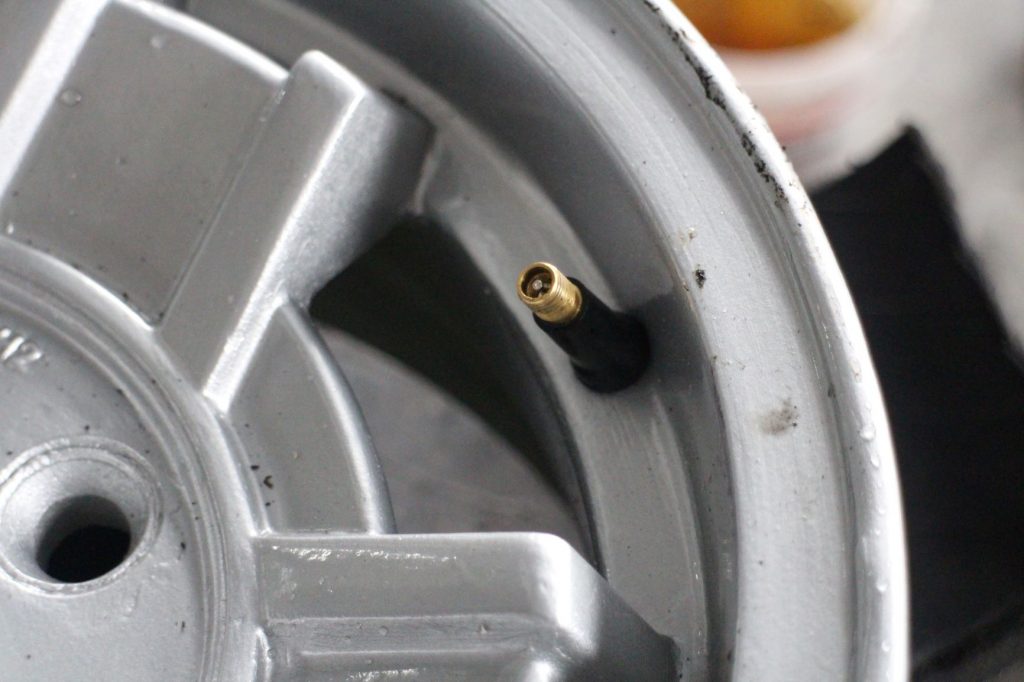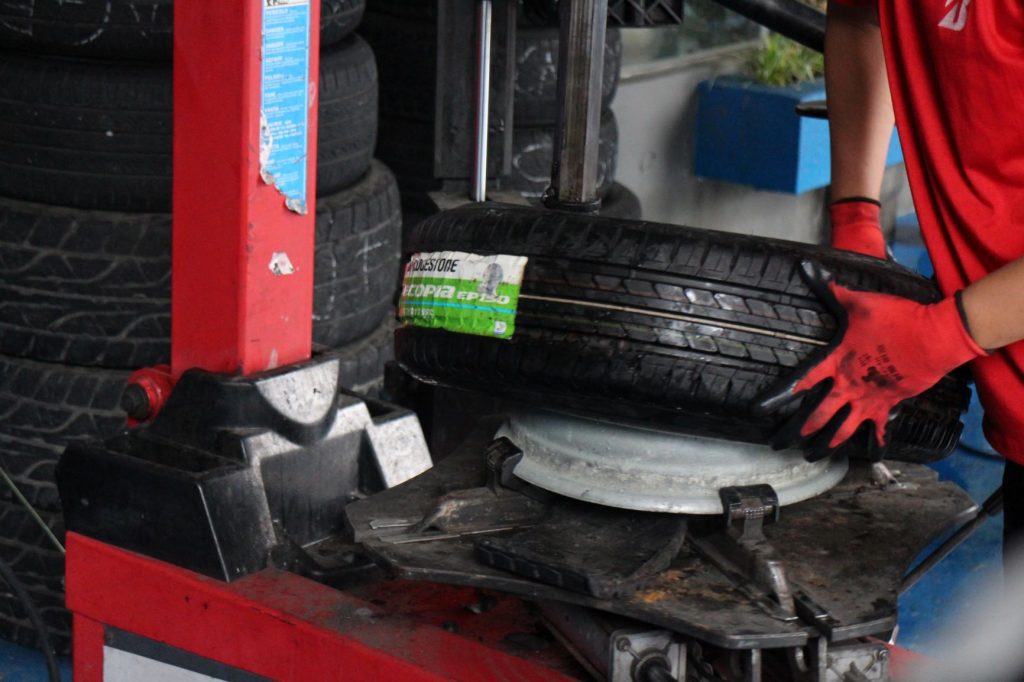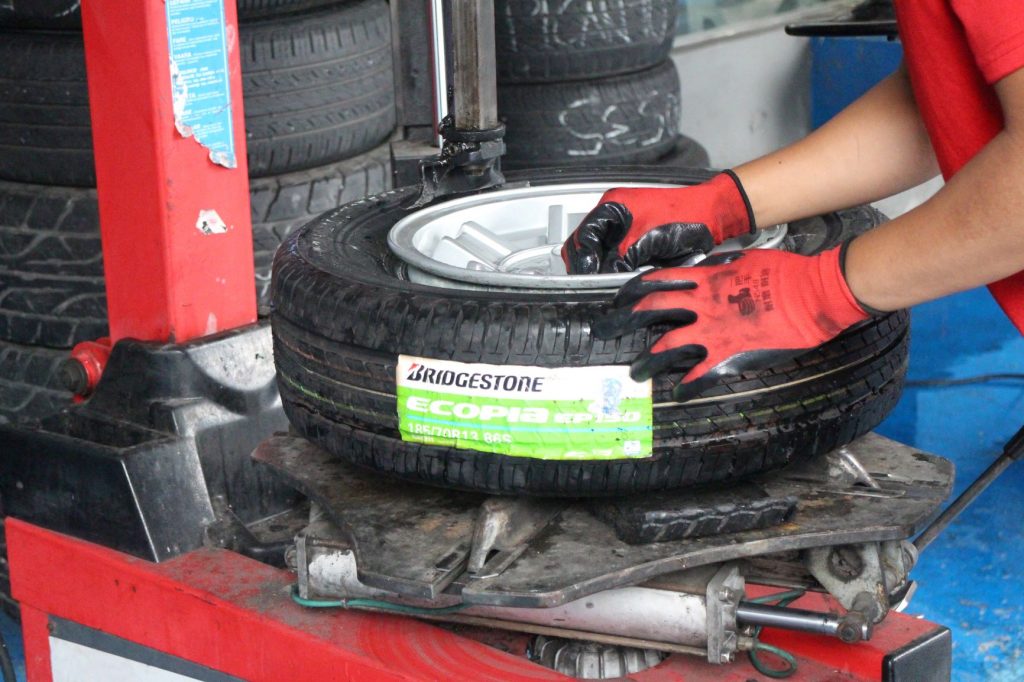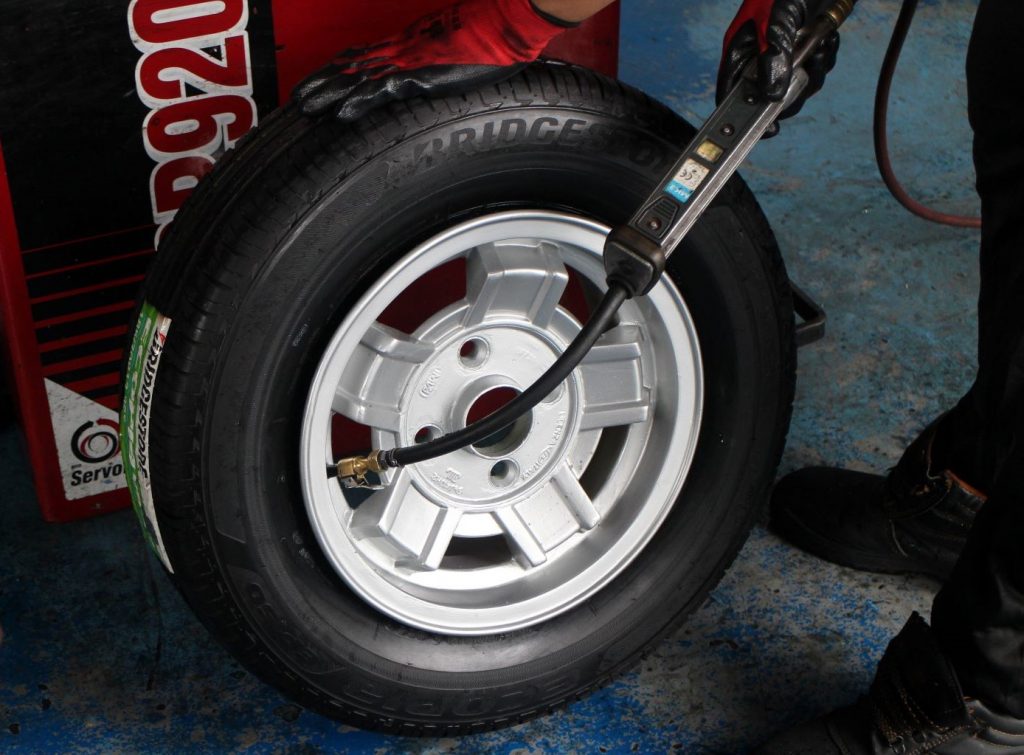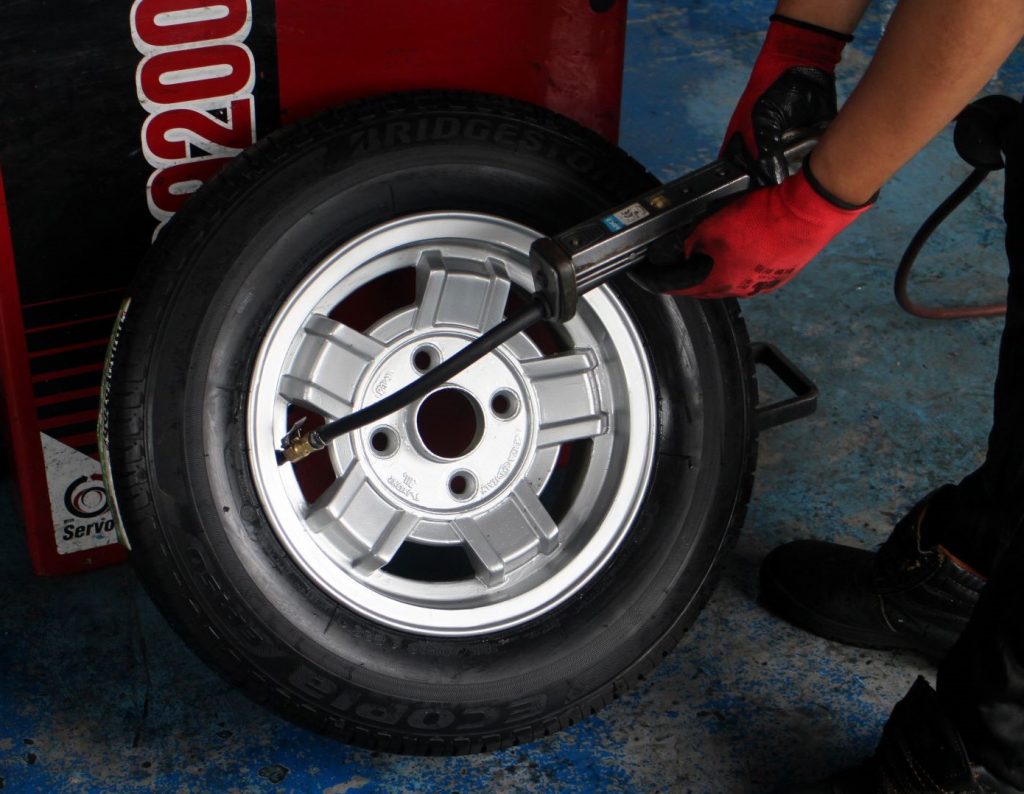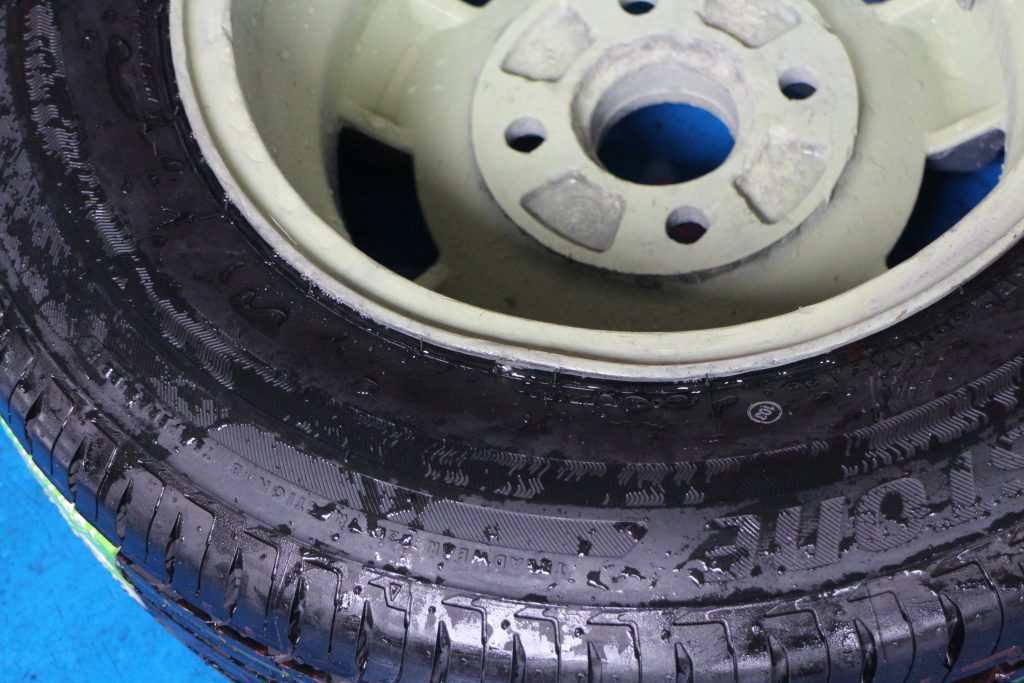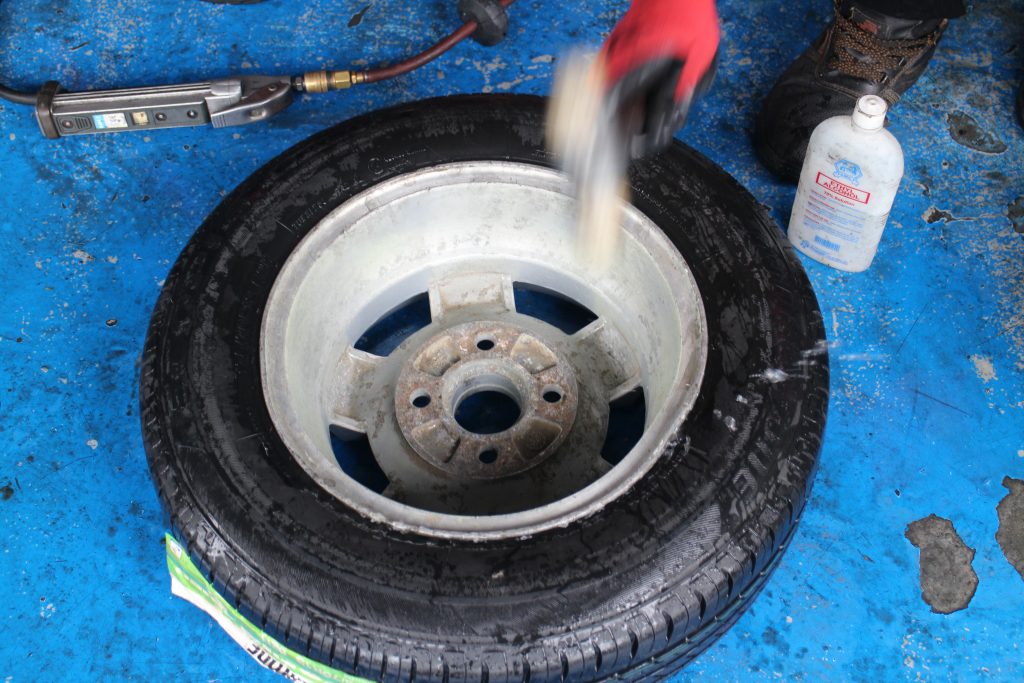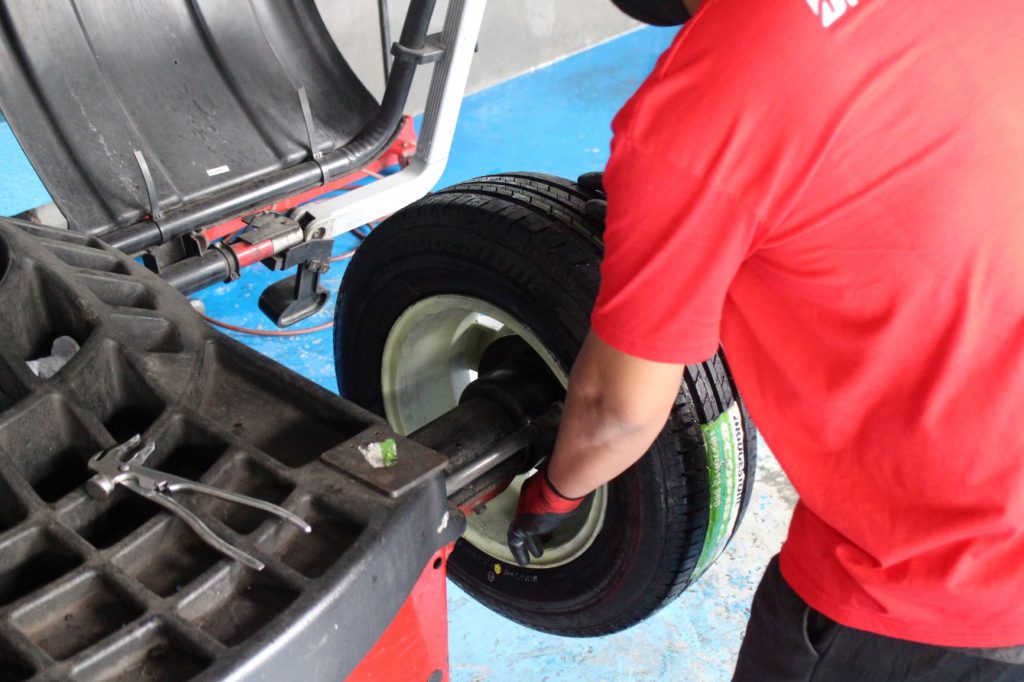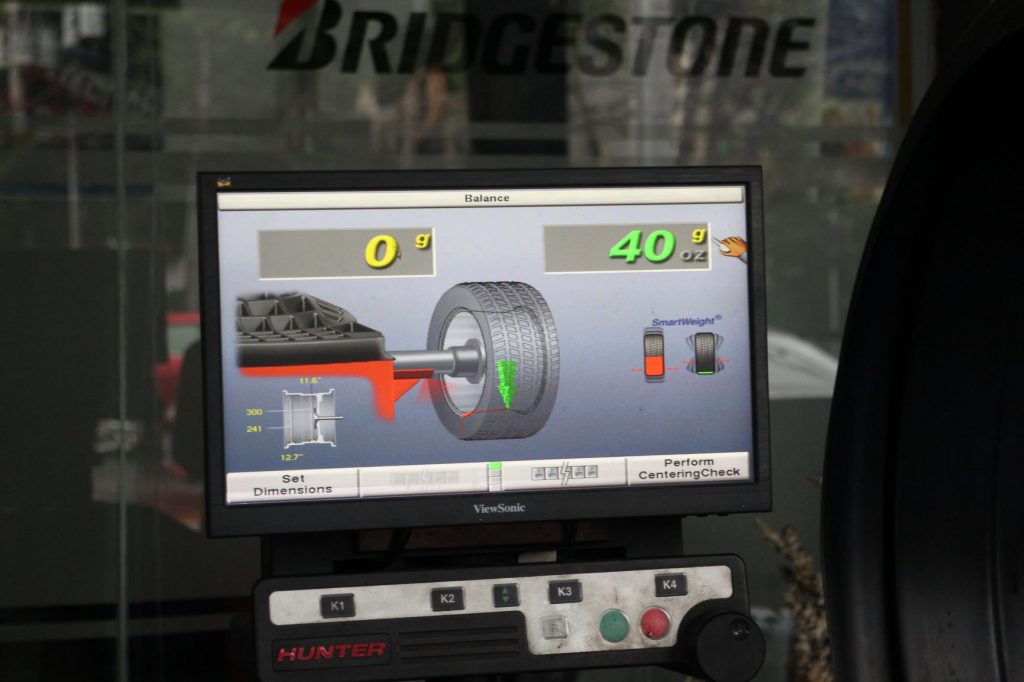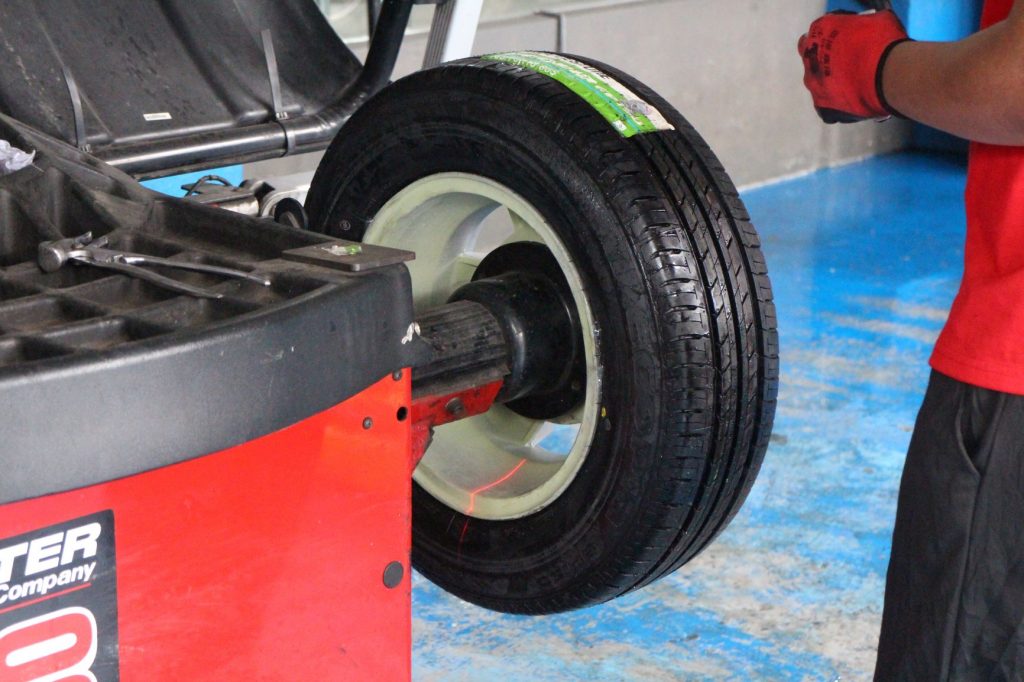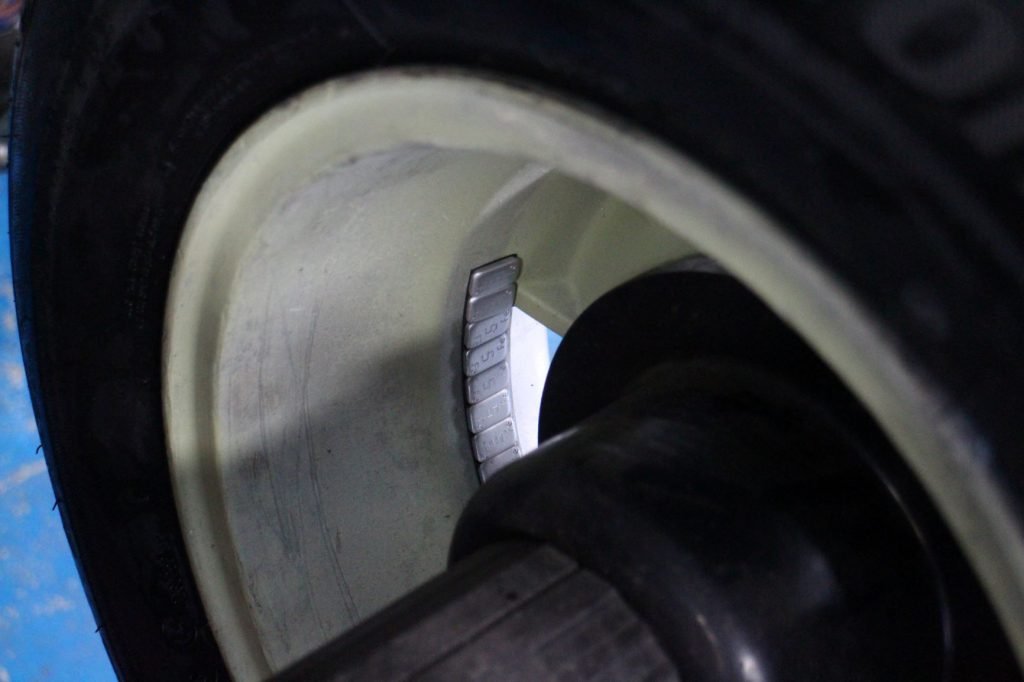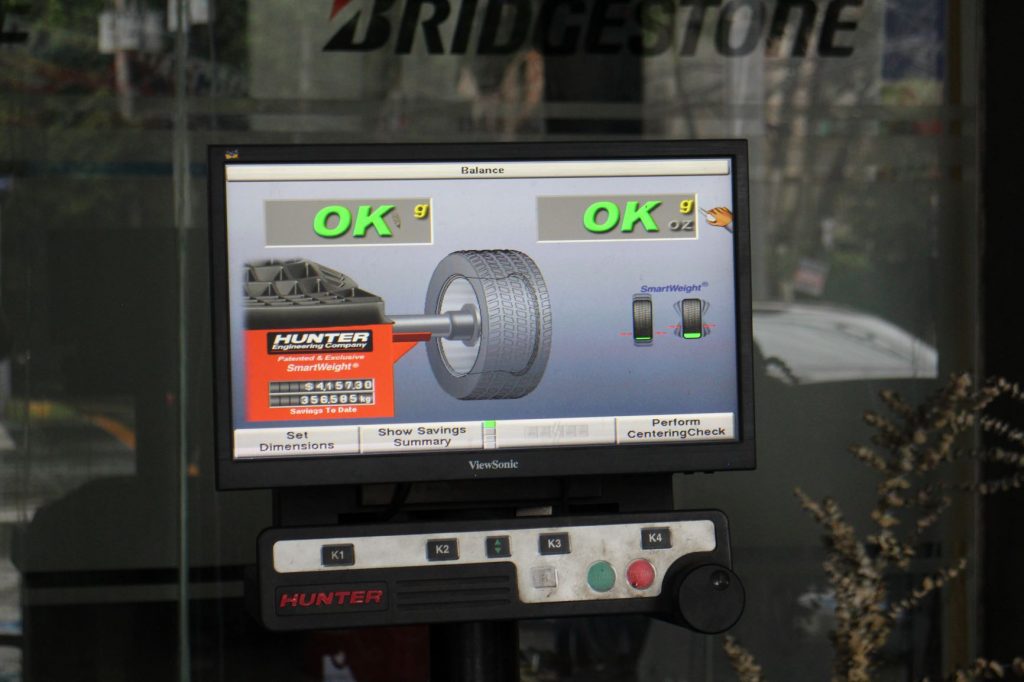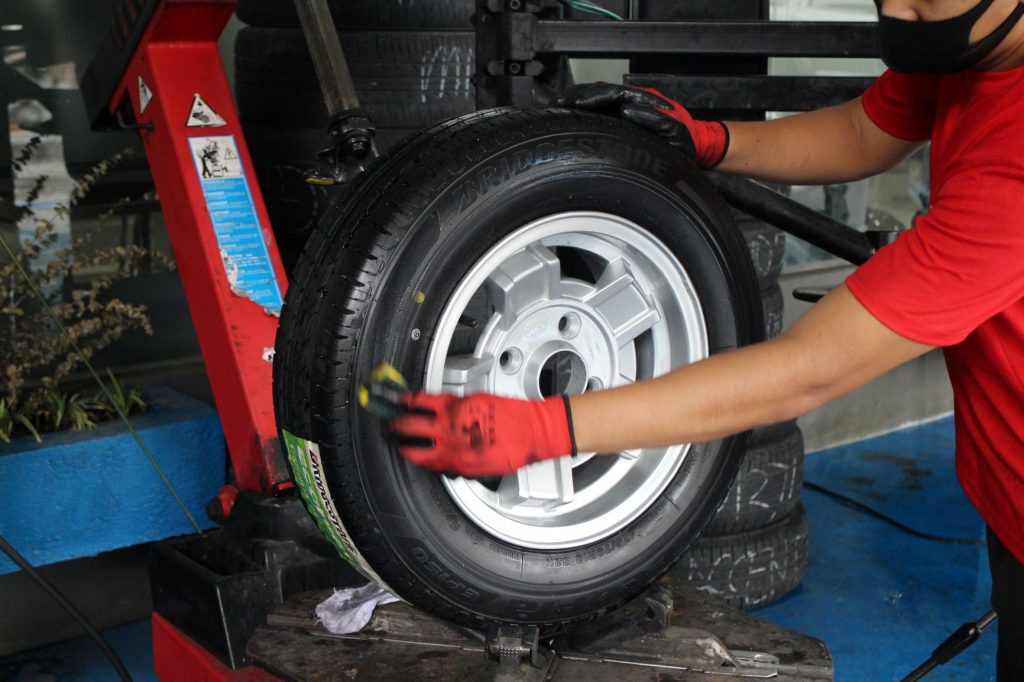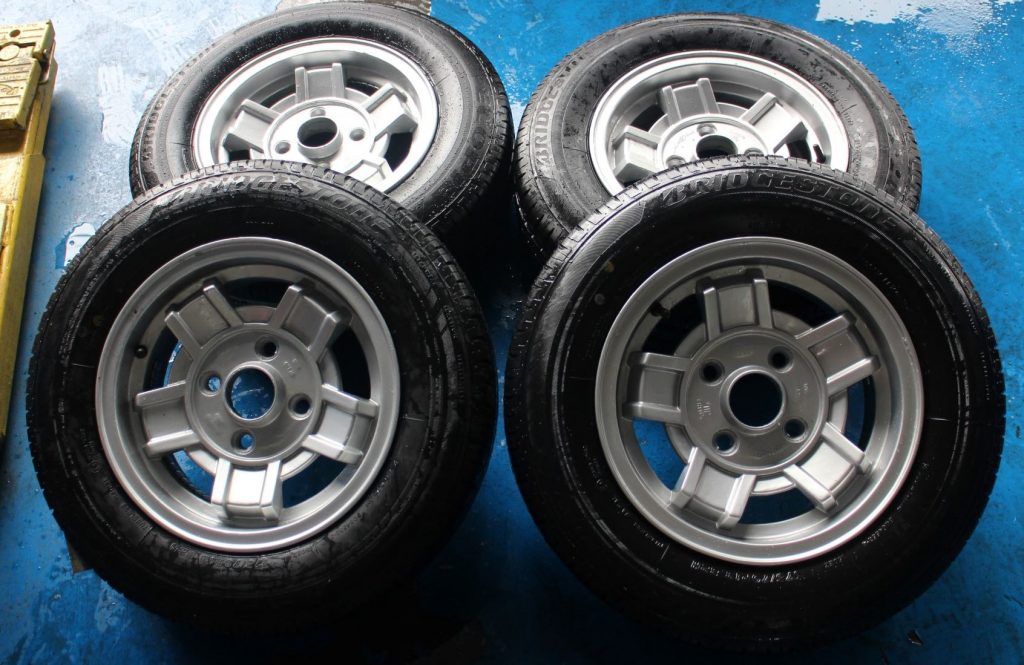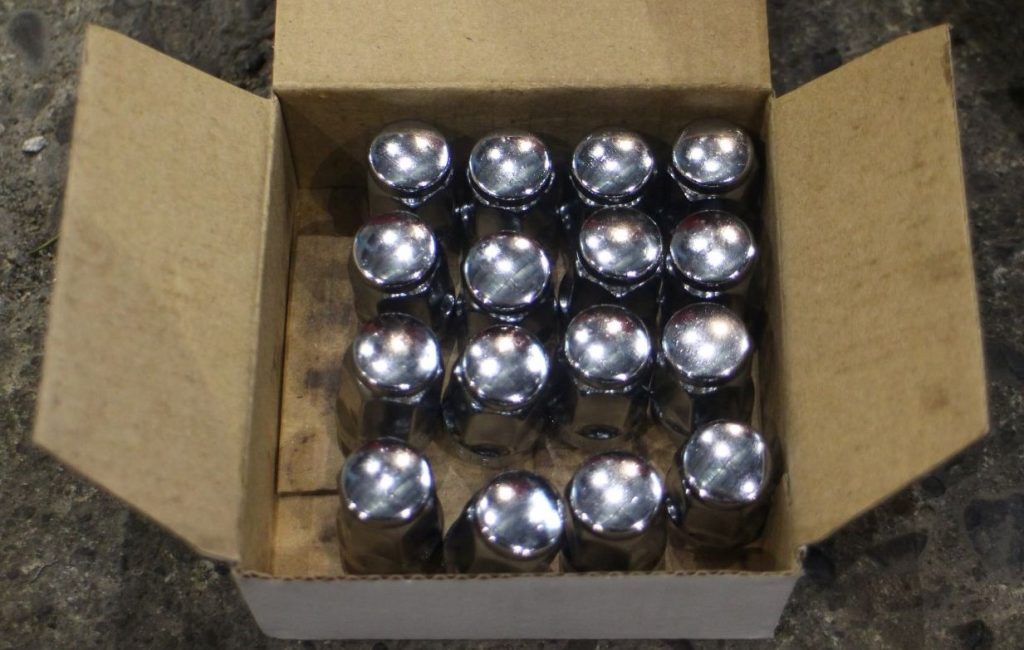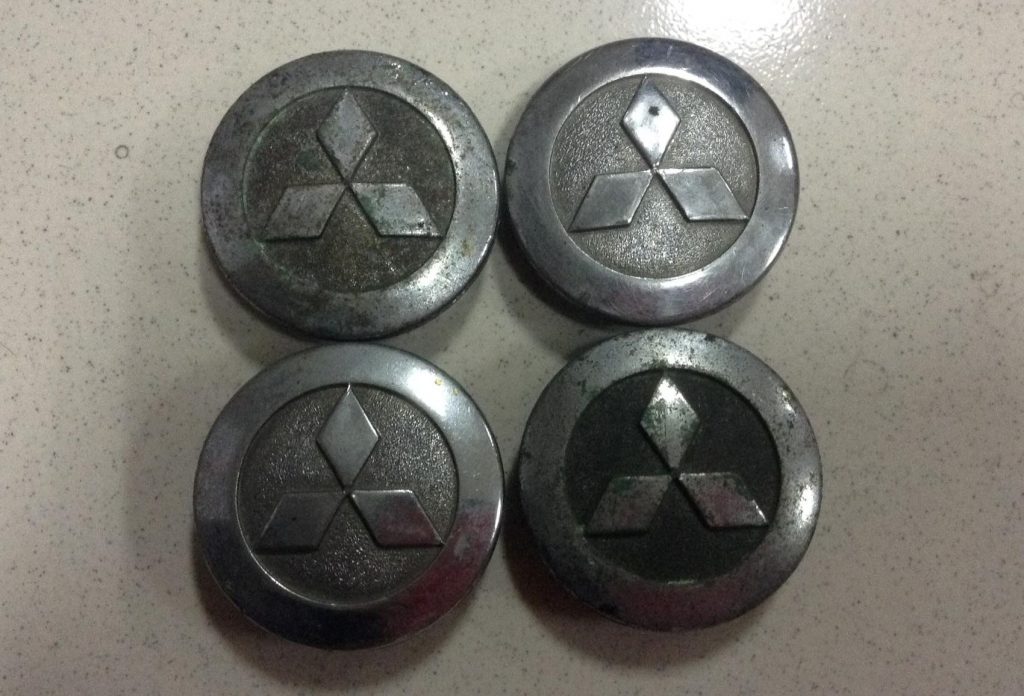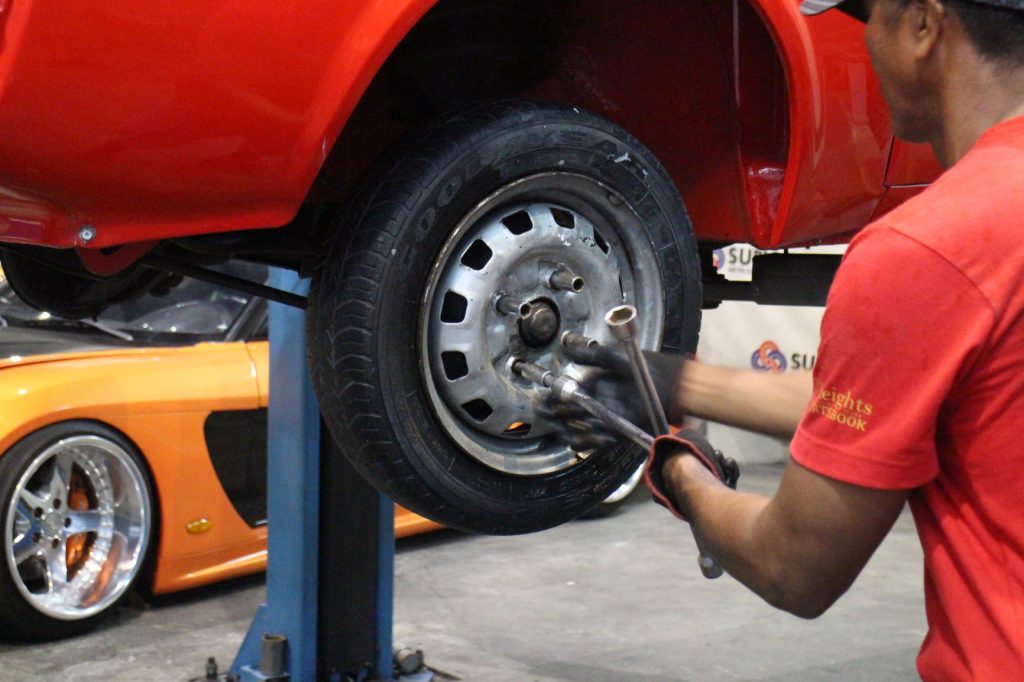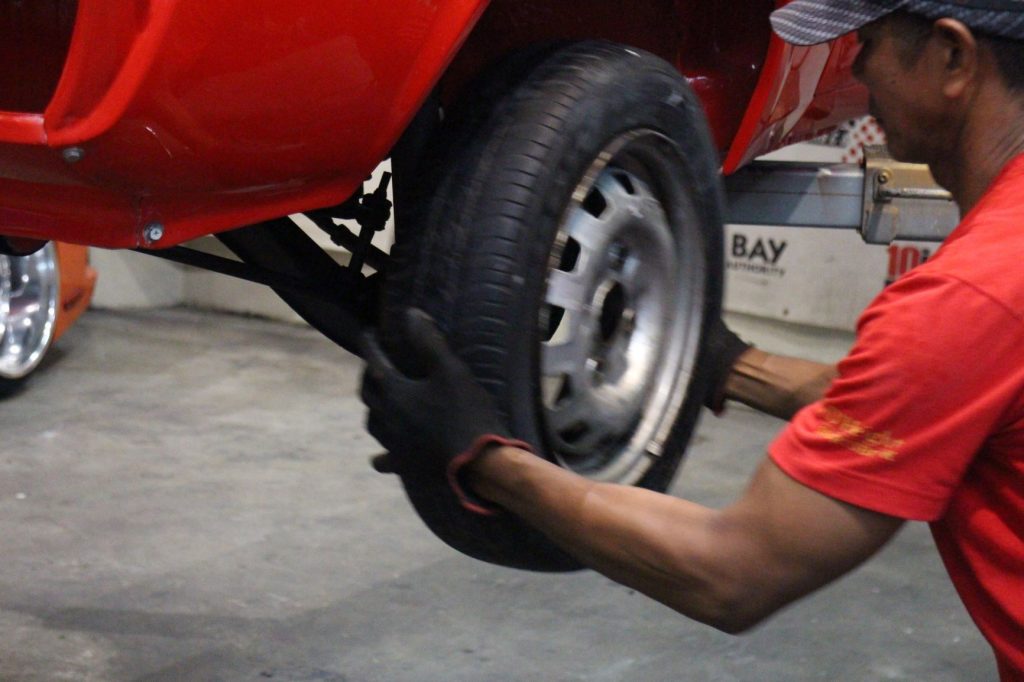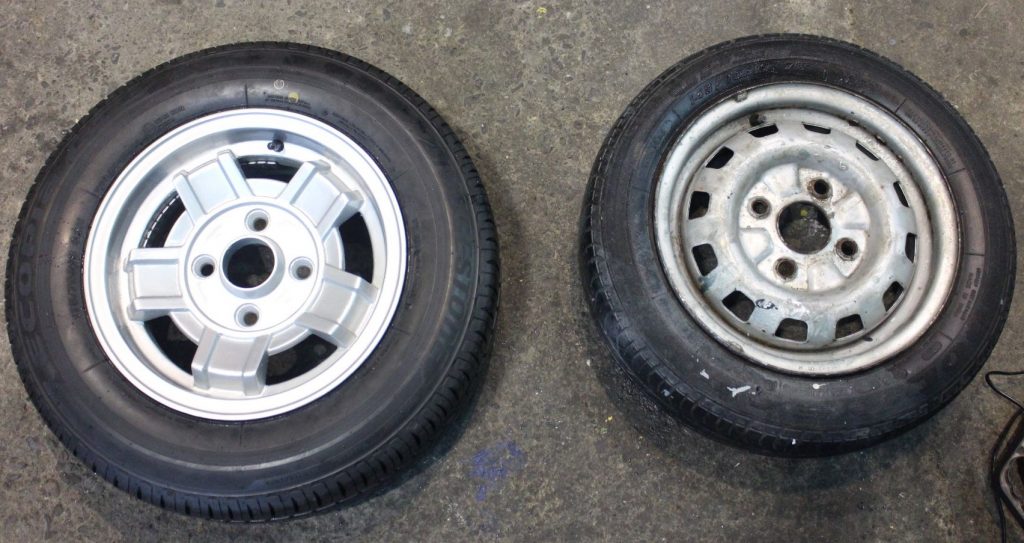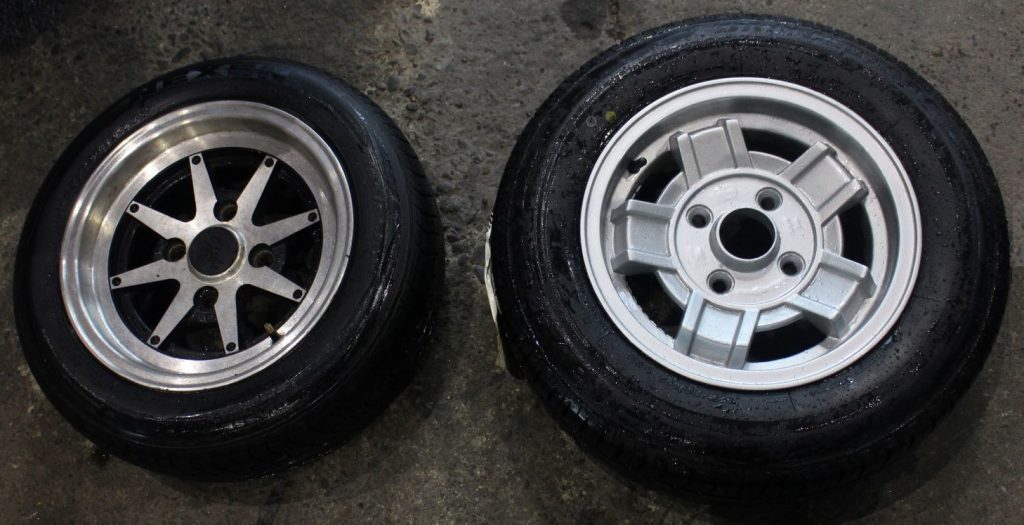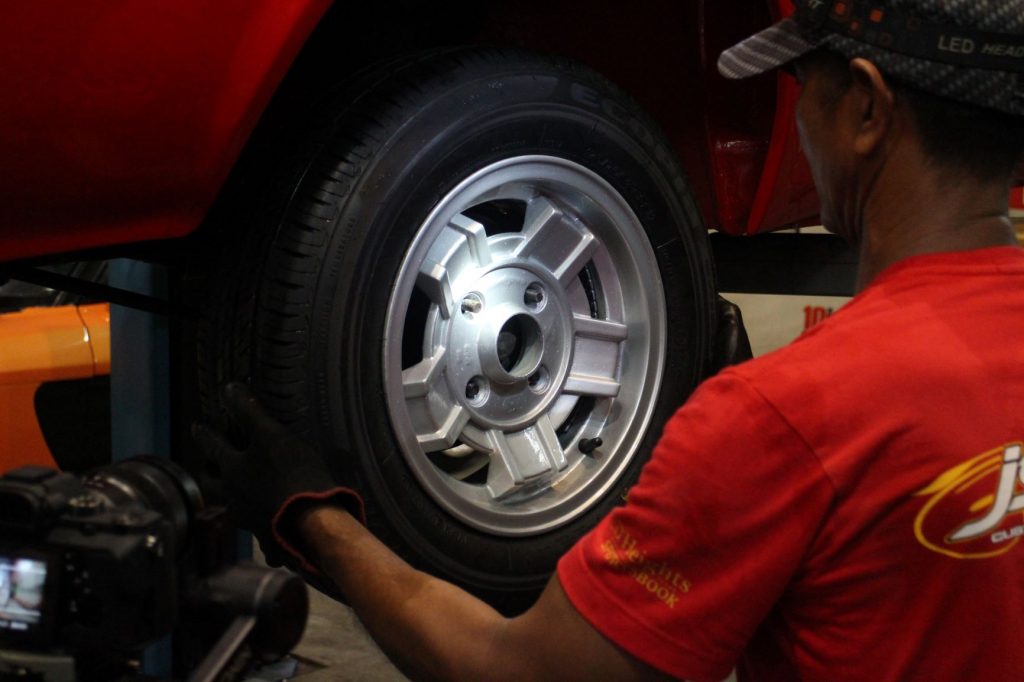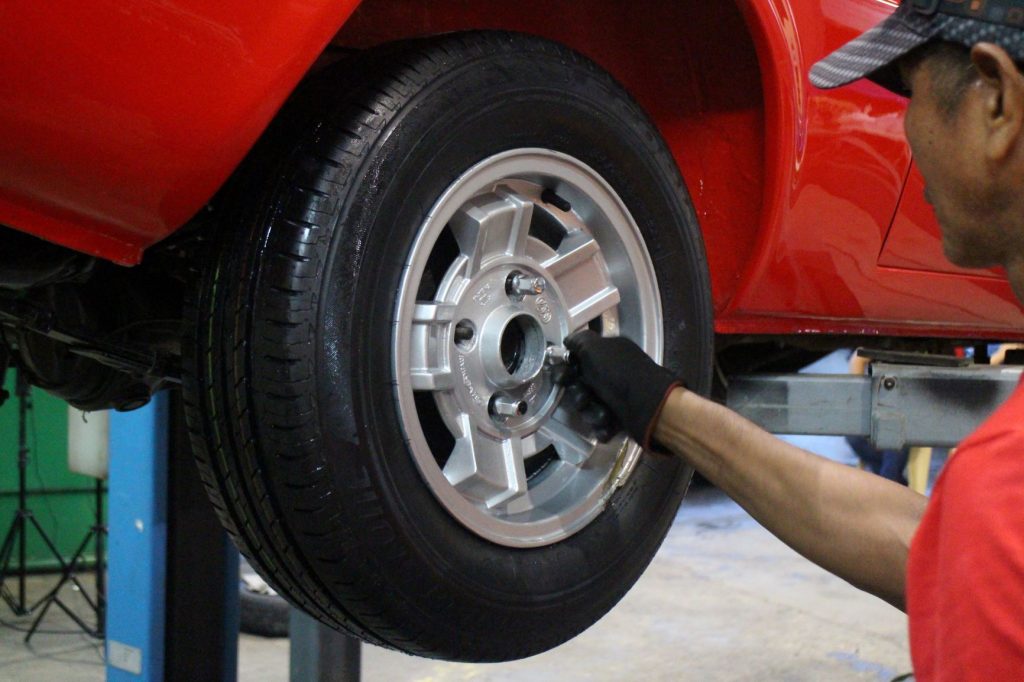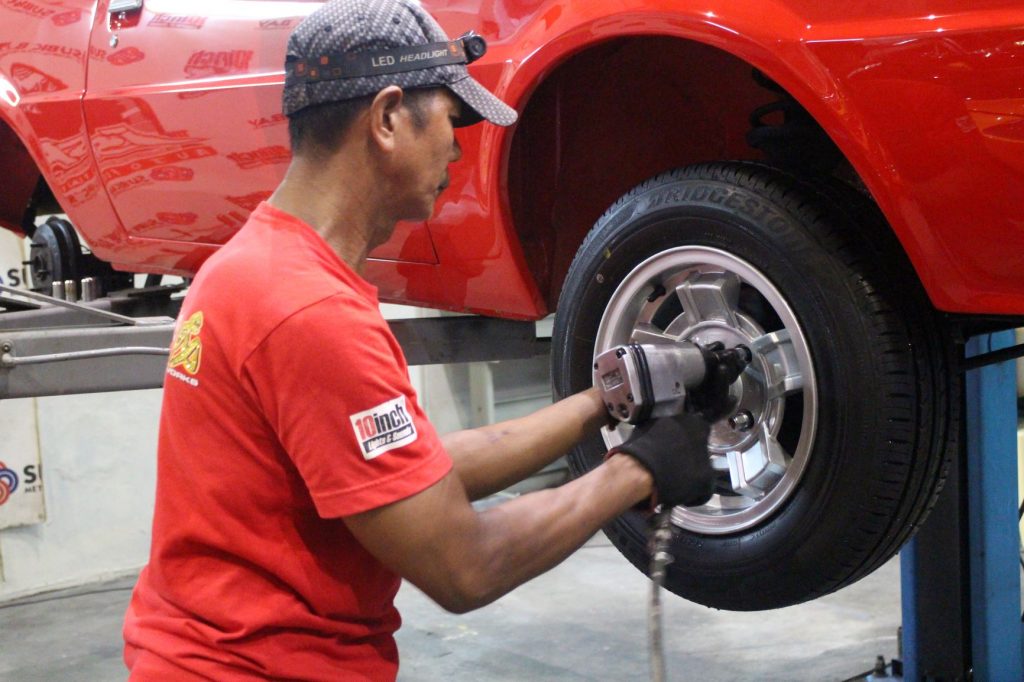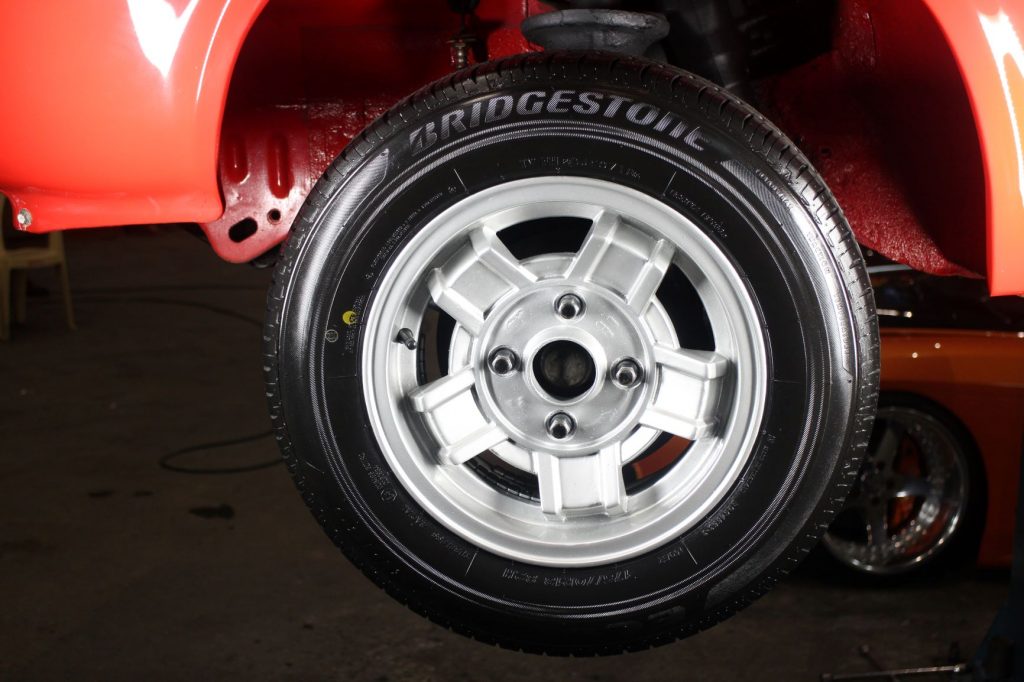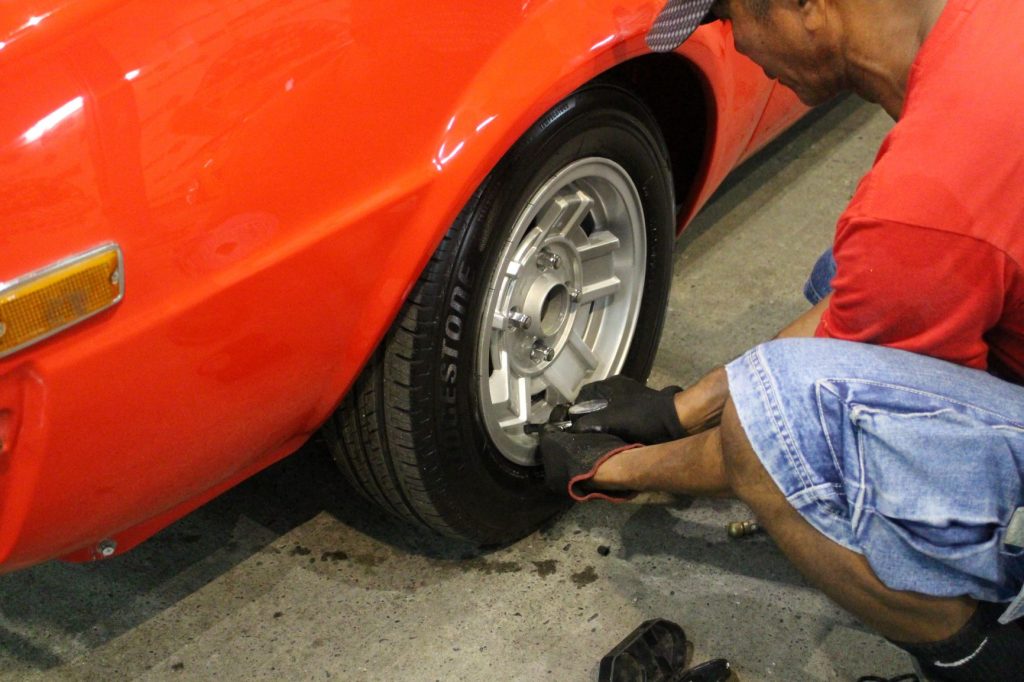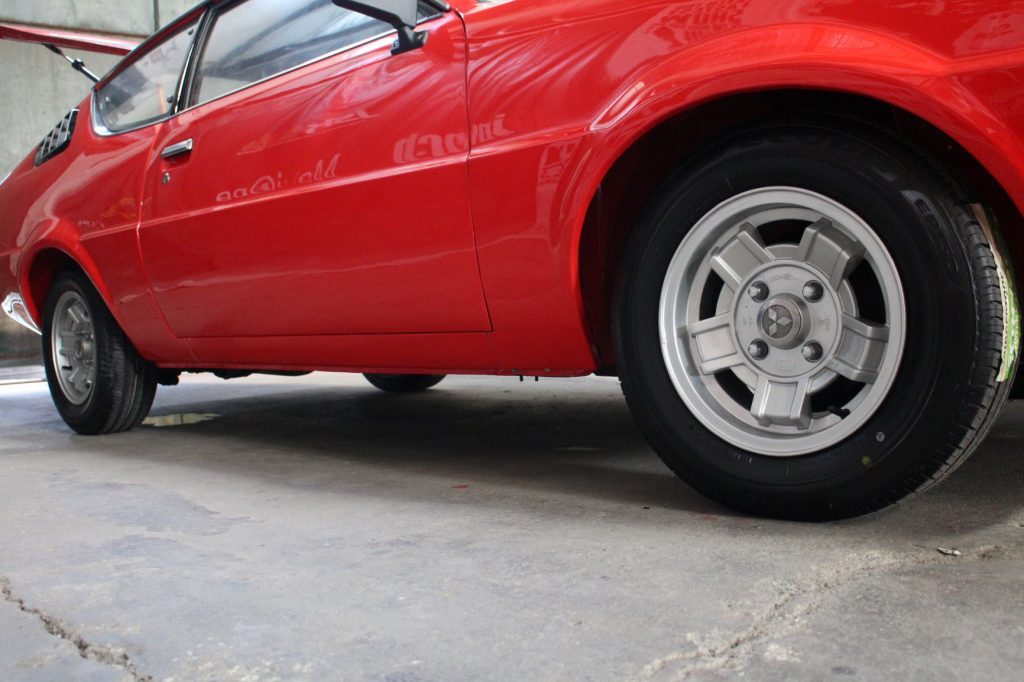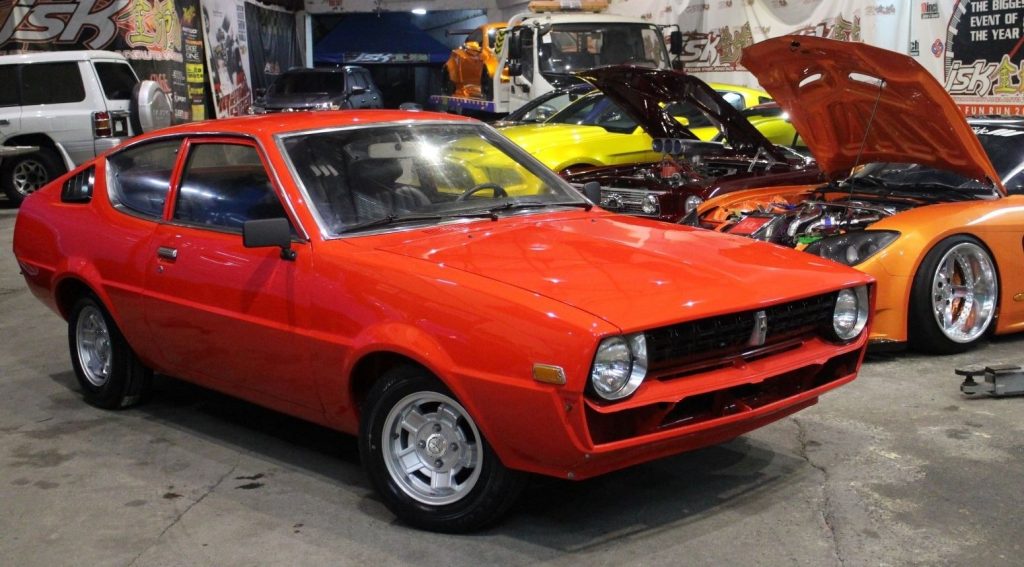When we last left our Power Wheels Magazine Project Car, the 1976 Mitsubishi Celeste 1600ST owned by ROPALI Chairman Roberto “Bob” Alingog and commissioned for restoration by his son, Aldous Rex Alingog, the newly upholstered interior has been installed and the technicians at JSK Custom Paint and Auto Works were just buttoning it up for completion. Hawkeyed readers will notice that the Celeste was sitting on a set of faux Mosport wheels, which we borrowed from the 1982 Mitsubishi Lancer SL donor car, where we got the 3-speed automatic transmission, power steering system, and some suspension parts.
Aldous wanted to have their Celeste restored as close to factory-looking as possible, just like how his dad, Bob, would remember it. He wanted it to be like a time capsule where they can reminisce about the good times they had with the car. Aldous sent the original 13-inch 5-spoke alloy wheels made by PAWI (Philippine Aluminum Wheels, Inc.), which is now Rota Philippines. According to Michael Rojas, the big boss of Rota, these wheels were the very first wheel design of then Rota-Italia and the Celeste was very first car to use alloy wheels as OEM (original equipment) in the country.
Refurbished Original Wheels and Brand New Bridgestone Tires
Respecting the provenance of the Celeste and the rich heritage of its original PAWI alloy wheels, Johnson Tan, the proprietor of JSK Custom Paint and Auto Works, had the wheels cleaned, checked for roundness and refurbished. He had the wheels painted in its original shade of plain silver because according to Rojas, it was a color developed for Rota by then RM Paints (now BASF) using a sample of an original wheel made by FPS Italy. The refurbishing work at JSK took years off the wheels and made them look like new.
These newly refurbished and historical PAWI wheels deserve the best rubber so we ordered a set of brand-new Bridgestone Ecopia EP-150 tires. We specified a pair of 175/70R13 tires for the front and 185/70R13 for the back to give the Celeste a slight rake. Then, we scheduled to have the brand-new tires mounted on the wheels and balanced at the Garage Plus TBA, Co., a Bridgestone tire dealership located at 333 Bonny Serrano Avenue (Santolan Road), Greenhills, San Juan City. We were fortunate that Bridgestone had an ongoing 3+1 Promo where we got to pay for the whole set of four tires for the price of just three.
Health, Safety and Professionalism
Because of the current COVID-19 pandemic, every one is compelled to follow several health protocols, including the wearing of face masks and face shields, and the observance of social distancing. We were glad to note that the good people at the Garage Plus TBA, Co., which is also known as Bridgestone Greenhills, strictly observe these health protocols. And more than that, the technicians also practice professionalism, speed and care in executing their duties. To start the process, the tire technician carefully mounted our freshly-refurbished wheel to their tire mounting / tire changer machine.
We learned that when installing new tires, the air valves must be replaced, too. These air valves have rubber seals that may become brittle over time, and valve seals and mechanisms that may fail because of age, which can lead to air leaks and flat tires. Since our wheels were refurbished, the old broken air valves were removed, thus, new ones were needed to be installed.
The Right Way to Mount Tires
A tire mounting / tire changer machine is designed to mount the tire to the wheel with care and precision. The machine features a clamping system to secure the wheel during the process without scoring or scratching the wheel lips, which can cause the wheel not to seal with the tire bead properly. The mounting machine is designed to carefully stretch the tire beads to go around and inside the wheel lips. Unlike manual mounting methods, where the mechanic uses steel bars and pallets, tire mounting machines can mount tires faster, safer and more accurately, saving time, money and effort.
The tire mounting machine accurately pushes the inner tire beads to go around and inside the outer wheel lips. The rotating movement stretches the beads naturally to protect it from being stretched beyond its limits and breaking it. The machine then accurately pushes the outer tire beads to go around and inside the outer wheel lips finally mounting the tire inside the wheel safely, without the need of manual force using a steel bar.
Initial Tire Inflation Pops and Leaks
Once the Bridgestone tire is wrapped safely around the wheel, the clamp on the mounting machine released the wheel and the technician proceeded with inflating the tire with air. We observed that when the tire is inflated for the first time, the expanding sidewalls will push the tire bead into the lips of the wheel and a loud pop will be heard to signify that the beads have seated properly into the wheel lips.
After the tire has seated properly into the wheel, the technician checked for small leaks by applying some soapy water along the wheel lips. He found some some bubbles at the back and got a wooden mallet to hit the side walls of the tire nearest the leak, which pushed the tire bead into the wheel lip and sealed the leak. After finding no more leaks around the contact areas between the wheel and the tire, he inflated our new Bridgestone Ecopia EP-150 tire to 30 PSI.
Balancing and Weights for Stability
After mounting and inflating the tire, the technician attached the wheel to the balancing machine. Balancing the wheels minimizes or eliminates vibrations, improves safety, stability and comfort. Wheel balancing also increases the useful life of a tire since the wheel will roll round and straight. It also ensures that the contact patch remains almost constant and stable for safe road holding.
After rolling the wheel for a few seconds, the balancing machine shows the technician where to place the lead weights and how much weight should be placed. Because we were mounting new tires on old refurbished wheels that had some nicks and dents, the technician expected to add a lot of lead weights to it. Fortunately for us, the wheels were still round and in good condition. After a few lead weights were added, the machine displayed an “OK” to show the wheel balancing was finished. It took the Bridgestone Greenhills tire technician just a little over four minutes to complete the whole process – from mounting to balancing – for each tire.
Dressing the Tire with Accessories
After all four tires have been professionally mounted on the wheels and balanced, the tire technician applied a dab of tire dressing to the brand-new Bridgestone Ecopia EP-150 tires not only to make it shine, but to also protect the rubber from UV rays and slow down the tires’ deterioration. We thanked the good people at Garage Plus TBA, Co. / Bridgestone Greenhills for their excellent service, loaded the tires into a friend’s pickup truck, and headed back to the JSK workshop in Valenzuela City under a pouring rain.
On the way to JSK, we bought a brand-new set of wheel nuts (lug nuts) from our favorite wheel shop along West Avenue. While stuck in traffic, we went online to monitor our posts about finding a set of center caps for our newly refurbished wheels. A few days earlier, a good friend and fellow car nut, Norbie Sison, posted a photo of what the correct center caps look like and after a several hours, Jey San Juan of Caloocan, offered to sell us his set of center caps with a Mitsubishi emblem in the middle.
Out with the Old…
Once we arrived at the workshop, the JSK technicians didn’t waste time getting the wheels from the pickup bed and rolling them next to the two-post car lifter, where the red Celeste was waiting for its new “shoes”. Erene, the JSK lead technician, gingerly unbolted the tired-looking steel rims fitted with undersized 145/70R13 Goodyear GP2 tires, which were the temporary wheels of our project car while the body repair and paint work were being done.
Before fitting the refurbished PAWI alloy wheels shod in brand-new Bridgestone Ecopia EP-150 tires, we compared it to the old undersized tire that we removed. As you can see in the pictures below, the undersized tire lowered the Celeste’s ground clearance and made it prone to scraping its underchassis when it goes over speed bumps and small hilly portions of the road. We also compared our new wheel-and-tire combo to the non-genuine Mosport wheels fitted with undersized 165/65R13 Nexen tires to show the difference in diameter. Some people may like to have aftermarket wheels fitted to their vehicles but in this case, we were after originality, especially after we learned of the significance of this PAWI alloy wheel to Rota.
… And In with the New
Johnson Tan instructed Erene to show us the proper way of bolting wheels back onto a vehicle. After fitting the wheel into the wheel studs, screw-in the lug nuts by hand to ensure that the lug nuts meshes correctly with the threads of the wheel stud. If there’s some resistance, it means the lug nut is not perfectly meshed to the stud. Immediately tightening unmeshed lug nuts with a cross wrench or with a pneumatic or electric impact wrench will only damage the threads of the lug nut and wheel stud. Screw in the lug nuts using a criss-cross pattern.
Once the lug nuts are finger-tightened easily, that’s the only time to use a cross wrench or a power tool. When the lug nuts have been tightened, that’s the time when the wheel can be lowered to the ground. If the wheels have been lowered to ground without the lug nuts being tightened first, the wheel may not seat properly against the hub and might wiggle or worse, come loose during a drive. The lug nuts must be tightened to the torque specified by the vehicle manufacturer, which in the Celeste’s case is 80 ft-lbs. or 108.5 Nm.
Regular Tire Maintenance
Once the Celeste was lowered to the ground, Erene checked the air pressure inside each tire. Under-inflation (too little air) shortens tire life and reduces fuel mileage while over-inflation (too much air) minimizes traction by reducing the contact patch and makes the car uncomfortable and safe to drive. Maintaining tire pressure to the manufacturer’s recommended settings is key to a longer tire life and more enjoyable driving. In the Celeste’s case, the manufacturer’s recommended tire pressure is between 26 and 32 PSI.
As you can see, clean wheels and tires add class and aesthetic points to a vehicle. Whether they are factory OEM wheels, aftermarket alloy wheels, or steel rims with hub caps, a clean set of wheels and tires will really set any car apart. We chose Bridgestone Ecopia EP-150 tires, not just to avail of their “3+1” promo, but because of its good looks, build quality and impressive performance. With the professional tire mounting and balancing services performed at Garage Plus TBA Co., / Bridgestone Greenhills, we are confident that Bob Alingog will have a safe, reliable and fun time driving his newly restored ’76 Celeste.
Catch us next time as Meguiar’s lends a helping hand in making our Project Car a really shiny time machine! Keep it here on Power Wheels Magazine.
 Power Wheels Magazine A Notch Above
Power Wheels Magazine A Notch Above

